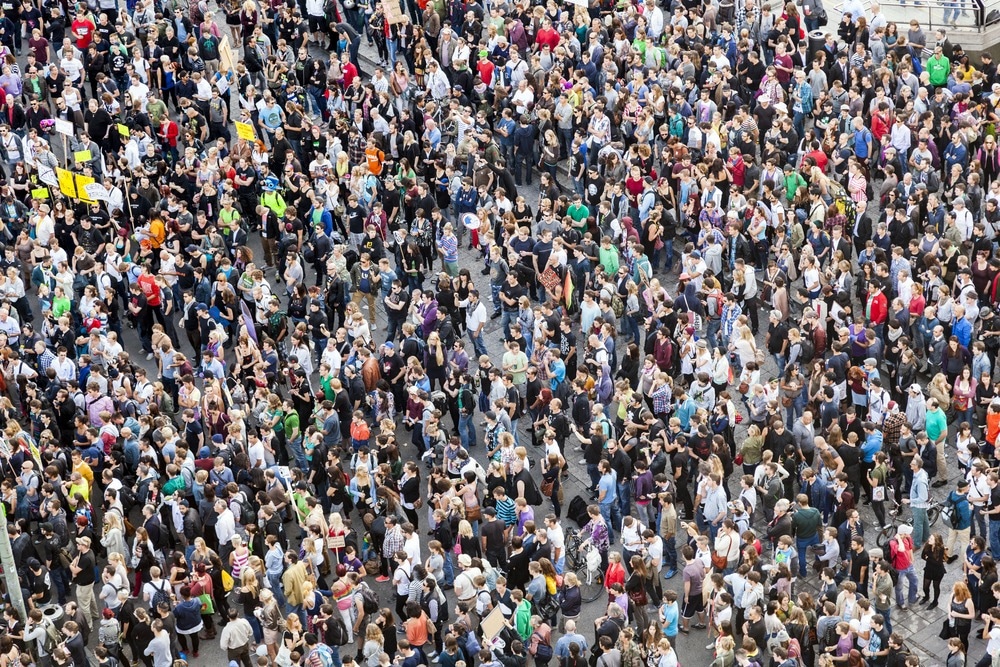upper gastrointestinal endoscopy wikipedia

In the context of infectious diseases, case isolation and quarantine are fundamental tools for preventing their transmission.
During the coronavirus disease 2019 (COVID-19) pandemic, social distancing became the norm, with large gatherings prohibited by the Prohibition On Group Gathering Regulation (POGGR) from March 2020 onwards. The goal of these efforts was to prevent or reduce the transmission of the severe acute respiratory syndrome coronavirus 2 (SARS-CoV-2).
A recent study published in PLoS ONE examines how mass gatherings in Hong Kong were associated with the local transmission of SARS-CoV-2.
 Study: The impact of mass gatherings on the local transmission of COVID-19 and the implications for social distancing policies: Evidence from Hong Kong. Image Credit: travelview / Shutterstock.com
Study: The impact of mass gatherings on the local transmission of COVID-19 and the implications for social distancing policies: Evidence from Hong Kong. Image Credit: travelview / Shutterstock.com
Introduction
The aim of the current study was to determine whether mass gatherings contribute to new waves of COVID-19 by assessing data from Hong Kong following the relaxation of social distancing restrictions. The World Health Organization (WHO) states that mass gatherings multiply the chances of viral spread and reduce the capacity to respond to infections.
In Hong Kong, from June 20, 2020, onwards, venlafaxine qui several public demonstrations against the enactment of the National Security Law (NSL) occurred. At this time, tens of thousands of people poured onto the streets, with about 370 arrests made.
People participating in these gatherings were typically masked but were crowded together with considerable physical contact. The subsequent third wave of COVID-19 from July 5, 2020, onwards is thought by some to be due to these events, rather than due to the lifting of quarantine requirements for some categories of travelers arriving from overseas. This is based on the observation that over 80% of cases were detected in local people, 40% of which were of an unknown origin.
Soon after, daily COVID-19 cases increased to the highest levels observed since the pandemic began. In fact, the incidence was almost zero until the beginning of July 2020. The next peak was on July 27, with triple-digit cases for the next week.
What does the study show?
The scientists used SCM modeling to analyze the epidemiological, meteorological, and socioeconomic attributes of the city. The results provide evidence that the relaxation of public health restrictions, with the resulting large number of social contacts due to the protests and demonstrations, promoted the extensive spread of SARS-CoV-2 and the large third wave.
In the absence of public gatherings and demonstrations, Hong Kong would have no more than 2 new cases registered on any single day from June 20 until the end of July.”
Instead of the predicted 1,000 total cases by July 31, over 3,000 cases were reported by July 2020, with infection rates rising by over 2.5% each day, rather than the expected 0.07%.
The model also shows that almost 90% and 100% of new cases in the first ten and 30 days after the intervention point when restrictions were relaxed, respectively, were due to SARS-CoV-2 transmission during mass gatherings.
What are the implications?
We conclude that public gatherings and demonstrations in Hong Kong in late June and early July contributed significantly to the new wave of COVID-19 infections that began in early July.”
Although new COVID-19 cases originated from overseas travelers who were exempted from quarantine, community spread accounted for the majority of new cases thereafter and was largely driven by the lifting of social distancing restrictions.
These findings may help shape guidelines for local policies to contain the pandemic in Hong Kong, such as restricting public gatherings. For example, the government limited the POGGR to two people in August 2020, later relaxing it to four. Although slowly, this effort eventually brought the wave under control.
The authors emphasize the need for political leaders to focus on measures that will deal with political unrest, ensure social welfare, and restore trust in government so that pandemic policies will be followed by the people. This could also be extrapolated to other parts of the world.
Other novel infectious diseases (NID) may still emerge; therefore, guidelines on social distancing and the tight regulation of mass gatherings may need to promptly enacted. This is particularly important during periods when herd immunity is non-existent, especially when the infectious agent is highly transmissible.
- Zhu, P., Tan, X., Wang, M., et al. (2023). The impact of mass gatherings on the local transmission of COVID-19 and the implications for social distancing policies: Evidence from Hong Kong. PLOS ONE. doi:10.1371/journal.pone.0279539.
Posted in: Medical Science News | Medical Research News | Disease/Infection News
Tags: Coronavirus, Coronavirus Disease COVID-19, immunity, Infectious Diseases, Pandemic, Prohibition, Public Health, Research, Respiratory, SARS, SARS-CoV-2, Severe Acute Respiratory, Severe Acute Respiratory Syndrome, Syndrome

Written by
Dr. Liji Thomas
Dr. Liji Thomas is an OB-GYN, who graduated from the Government Medical College, University of Calicut, Kerala, in 2001. Liji practiced as a full-time consultant in obstetrics/gynecology in a private hospital for a few years following her graduation. She has counseled hundreds of patients facing issues from pregnancy-related problems and infertility, and has been in charge of over 2,000 deliveries, striving always to achieve a normal delivery rather than operative.
Source: Read Full Article